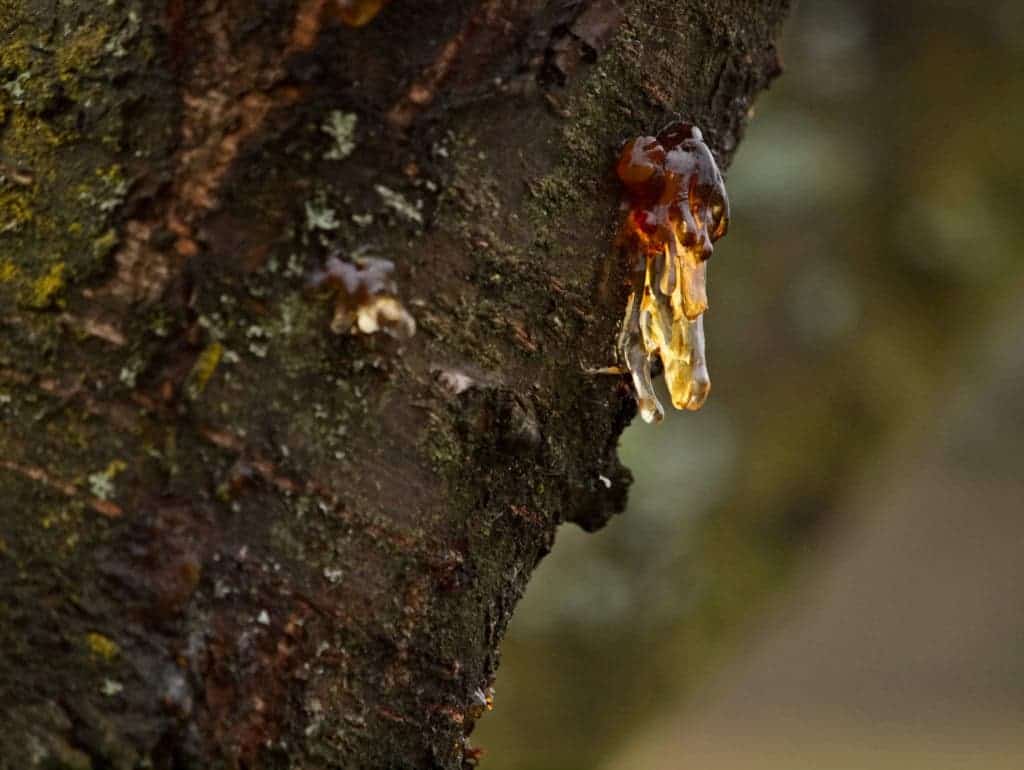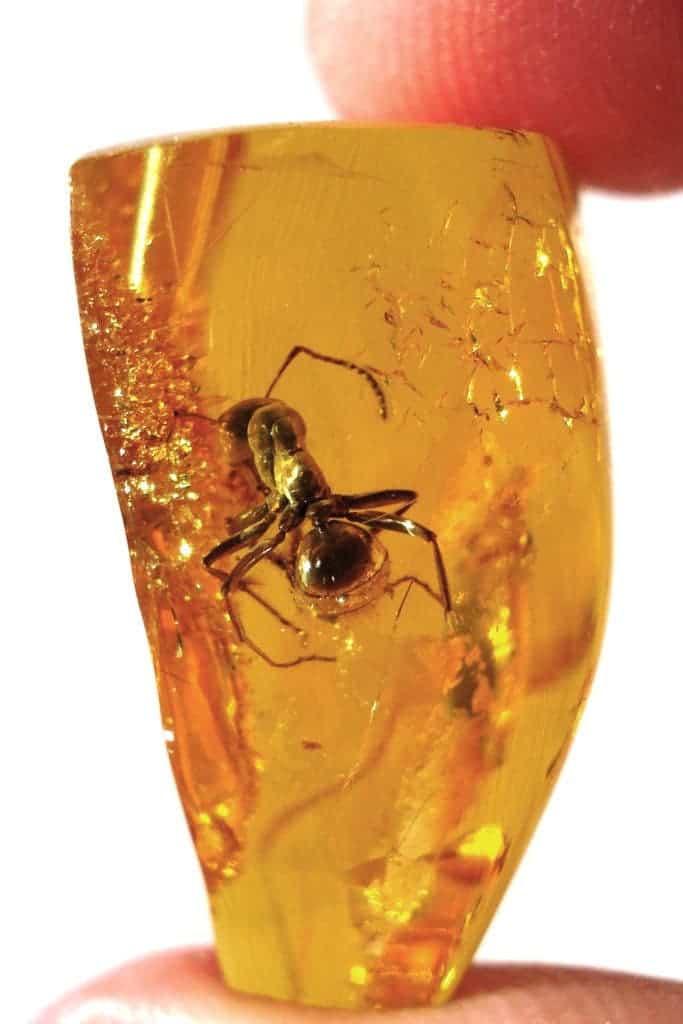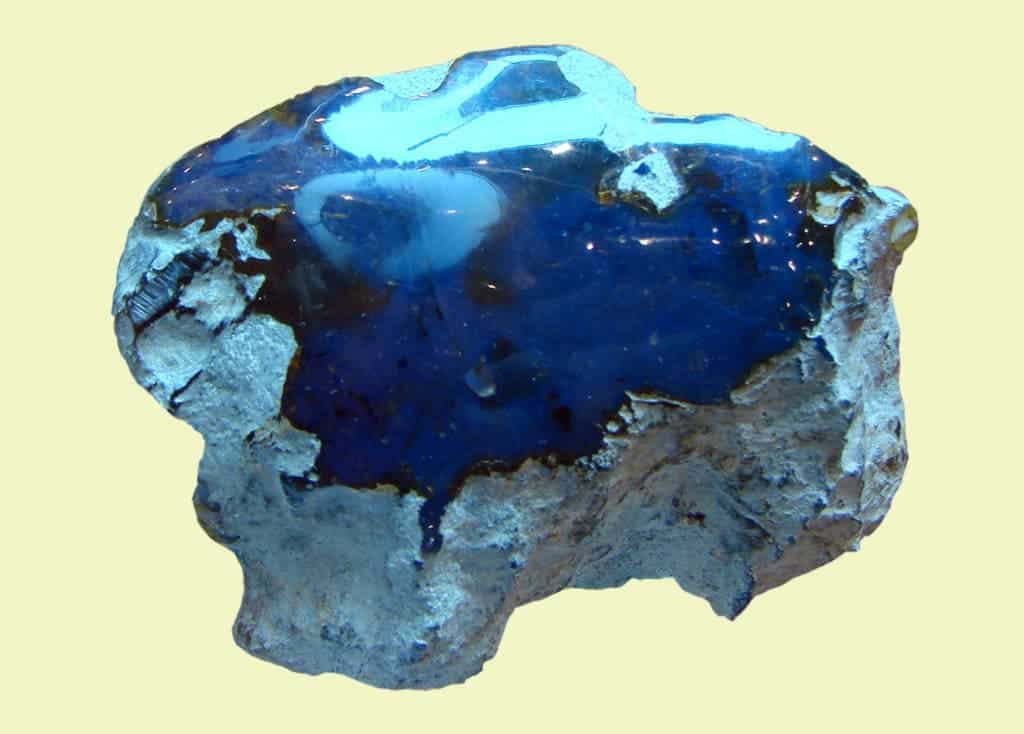What is amber?
Amber is one of nature’s gems. When a tree is injured, it can create a resin that seals the wound and hardens. Resistant resin that finds its way between layers of sediment fossilizes and becomes hard amber after millions of years. It’s necessary to have exactly the right conditions! Amber is interesting because it can contain creatures and plants from millions of years ago. It has also been used in jewelry for a few thousand years.
Where does amber come from?
You might have thought that amber comes from tree sap. Actually, it is created from resin. The difference is that sap transports nutrients around the tree while resin is semi-solid and acts as a defense response for the plant’s immune system. When the tree has a wound (like a broken branch) or if it is attacked by insects or fungi, it exudes the thick resin that plugs up the injury and prevents further damage. It seals and sterilizes the injury.

When resin is secreted, it’s not certain that it will be turned into amber. More often than not, it gets weathered away. First of all the resin needs to be chemically stable and not degrade over time. It has to be resistant to sun, rain, extreme temperatures, and microorganisms like bacteria and fungi. There are two types of resin produced by plants that can fossilize. Terpenoids are produced by gymnosperms (conifers) and angiosperms. They are composed of ring structures made from isoprene (C5H8) units. Phenolic resins are only produced by Angiosperms. An extinct type of trees called medullosans produced another unique type of resin.
The next factor is that the resin needs to be in the right conditions to fossilize. Young amber could be transported in seawater (it floats), and then buried under sediment to fossilize. In the Baltics, glaciers knocked down many trees and buried them, allowing them to fossilize. Wet clay and sand sediments preserve resin well because they don’t contain much oxygen and the sediments eventually transform into rocks. Intense pressure and temperatures cause the resin to become a solid orange gem. First molecular polymerization forms copal (young amber) and then the heat and pressure drive out terpenes and complete the amber transformation.
Most amber found is about 30-90 million years old, though it’s not sure how long the process to turn resin into amber actually takes. The oldest amber discovered is from the Upper Carboniferous, 320 millions of years ago. Most amber is from pine trees or other conifers, though there are a variety of trees that they can come from. However, most amber is from extinct species because the resin was exuded so long ago.
Perfectly preserved
Amber can be interesting because it can contain pieces of plants, insects, and other creatures. Resin is sticky and liquid, attracting insects because of its sweetness. They get caught in the resin as it hardens and they get preserved. The oldest amber with an organism inside has mites and is from 230 million years ago in north-eastern Italy. Pieces of plants can help identify the source of the amber and insects and other creatures are often perfected preserved which gives information about them. The amber process preserves parts that wouldn’t be preserved through regular fossilization. Amber with remains is also sought after for jewelry because it looks quite nice.
Amber has been used since the stone age (13,000 years) ago in decorations and jewelry. Sold amber can be imitations, the most common are young resins that are not fully formed into amber or stained glass or plastic. A way to know if yours is real is that it should float in saltwater.

Amber can be differently coloured and look in a number of different ways. A light honey colour is typical but amber can range from a white-ish colour to almost black and even blue or red. It depends on the type of tree. Clearer amber is from resin excreted on the bark, cloudier amber comes from the inside of trees.
Amber can be found all around the world. It can be open or underground mined. Most of the world’s extractable amber is found in the Kaliningrad Oblast. Amber has been taken from here since the 12 century. Sometimes amber is washed up from the sea floor and ends up on the beach or collected by diving or dredging. One type of amber called Dominican is a blue colour, and highly prized because it is so rare. It is mined through bell pitting which is dangerous because the tunnels can collapse.

Amber is a beautiful stone that takes millions of years to form. Now you can appreciate this fact if you own any amber.






